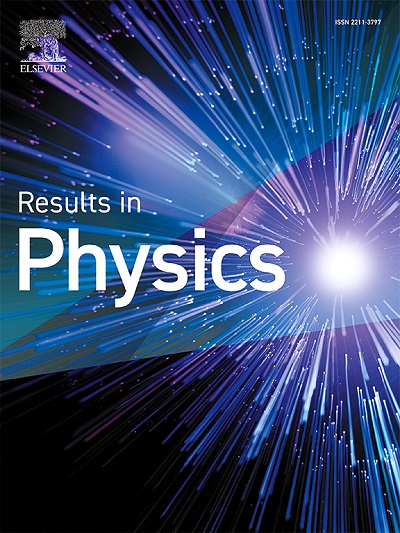Conduction mechanism investigation in YCa2Cu3Oδ colossal permittivity ceramics
IF 4.4
2区 物理与天体物理
Q2 MATERIALS SCIENCE, MULTIDISCIPLINARY
引用次数: 0
Abstract
Sol-gel synthesized ceramic exhibits giant permittivity , low loss , and high stability over frequency and temperature. XRD revealed a tetragonal phase (P4/mmm). XPS confirmed high oxygen vacancy density. The structural heterogeneity, shown by SEM, between neighboring grains results from Schottky barrier formation at the grain boundaries, potentially explaining the TCR phenomenon. Magnetic analysis showed paramagnetism. Electrical property investigation revealed an insulating-to-metallic phase transition with temperature, associated with changing conduction mechanisms. Paramagnetic-insulating behavior at higher temperatures is linked to thermal activation, while electron scattering contributes to paramagnetic-metallic conduction at lower temperatures. The resistivity behavior follows the percolation model, providing insights into the interplay between conducting and insulating phases, relevant for optimizing perovskite-based materials in electronics and energy storage.
YCa2Cu3Oδ巨介电常数陶瓷导电机理研究
溶胶-凝胶法制备的YCa2Cu3Oδ陶瓷具有大介电常数εr′≈104、低损耗tanδ0.3、高频率和温度稳定性等特点。XRD显示为四方相(P4/mmm)。XPS证实了高氧空位密度。扫描电镜显示,邻近晶粒之间的结构不均匀性是由晶界上的肖特基势垒形成造成的,这可能解释了TCR现象。磁性分析显示为顺磁性。电学性质的研究揭示了绝缘到金属的相变随温度的变化,与传导机制的变化有关。在较高温度下的顺磁绝缘行为与热激活有关,而电子散射有助于在较低温度下的顺磁金属传导。电阻率行为遵循渗透模型,为导电相和绝缘相之间的相互作用提供了见解,这与优化电子和储能中的钙钛矿基材料有关。
本文章由计算机程序翻译,如有差异,请以英文原文为准。
求助全文
约1分钟内获得全文
求助全文
来源期刊

Results in Physics
MATERIALS SCIENCE, MULTIDISCIPLINARYPHYSIC-PHYSICS, MULTIDISCIPLINARY
CiteScore
8.70
自引率
9.40%
发文量
754
审稿时长
50 days
期刊介绍:
Results in Physics is an open access journal offering authors the opportunity to publish in all fundamental and interdisciplinary areas of physics, materials science, and applied physics. Papers of a theoretical, computational, and experimental nature are all welcome. Results in Physics accepts papers that are scientifically sound, technically correct and provide valuable new knowledge to the physics community. Topics such as three-dimensional flow and magnetohydrodynamics are not within the scope of Results in Physics.
Results in Physics welcomes three types of papers:
1. Full research papers
2. Microarticles: very short papers, no longer than two pages. They may consist of a single, but well-described piece of information, such as:
- Data and/or a plot plus a description
- Description of a new method or instrumentation
- Negative results
- Concept or design study
3. Letters to the Editor: Letters discussing a recent article published in Results in Physics are welcome. These are objective, constructive, or educational critiques of papers published in Results in Physics. Accepted letters will be sent to the author of the original paper for a response. Each letter and response is published together. Letters should be received within 8 weeks of the article''s publication. They should not exceed 750 words of text and 10 references.
 求助内容:
求助内容: 应助结果提醒方式:
应助结果提醒方式:


